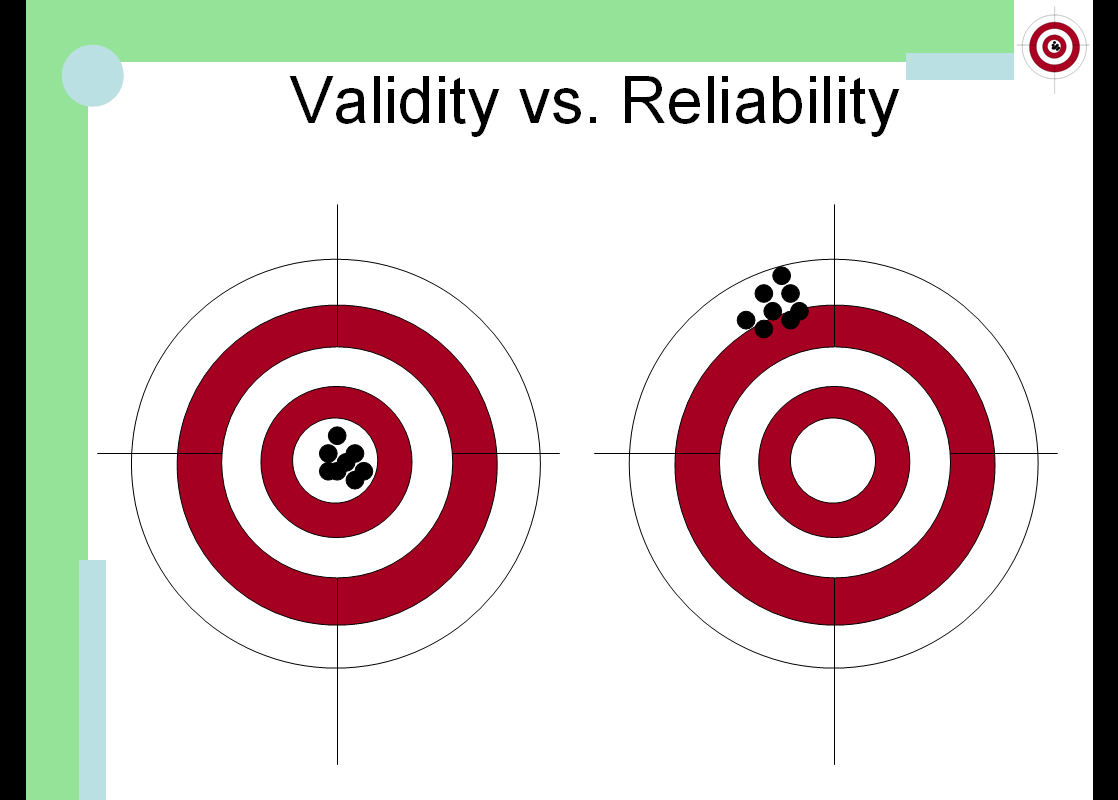


In order to understand a little about the distinction between validity and reliability, you need to know what they are. However, how do, validity and reliability differ? In fact, using more or less valid or reliable instruments can add or subtract value to a study itself. Poor levels of postural control and core stability in children with mild IDs may be the underlying factor of those higher correlations.Validity and reliability are two key constructs in the analysis of the results produced by psychological studies. The correlations assessing discriminant validity were higher than expected.

The FSM-ID showed good test–retest reliability and good convergent validity with the HHD and BOT-2 subtest strength. Correlation between items of the FSM-ID and BOT-2 (balance items) ranged 0.41–0.70. Correlation between the items of the FSM-ID and HHD ranged 0.39–0.79 and between FSM-ID and BOT-2 (strength items) 0.41–0.80. Test–retest reliability ICC ranged 0.89–0.98. Construct validity was determined by calculating correlations between the FSM-ID and handheld dynamometry (HHD) (convergent validity), FSM-ID, FSM-ID and subtest strength of the Bruininks-Oseretsky test of motor proficiency – second edition (BOT-2) (convergent validity) and the FSM-ID and balance subtest of the BOT-2 (discriminant validity).

Standard error of measurement and smallest detectable change were calculated. Test–retest reliability ( n = 32) was examined by a two-way interclass correlation coefficient for agreement (ICC 2.1A). Methodįifty-two children with mild ID (40 boys and 12 girls, mean age 8.48 years, SD = 1.48) were tested with the FSM. The aim of this study was to investigate the test–retest reliability and construct validity of the Functional Strength Measurement in children with ID (FSM-ID). There is lack of valid and reliable field-based tests for assessing functional strength in young children with mild intellectual disabilities (IDs).


 0 kommentar(er)
0 kommentar(er)
